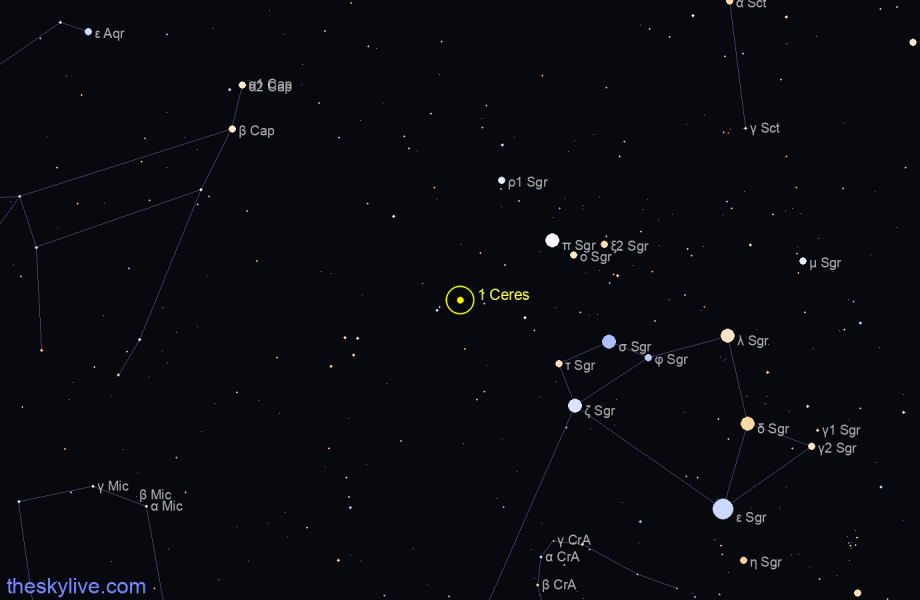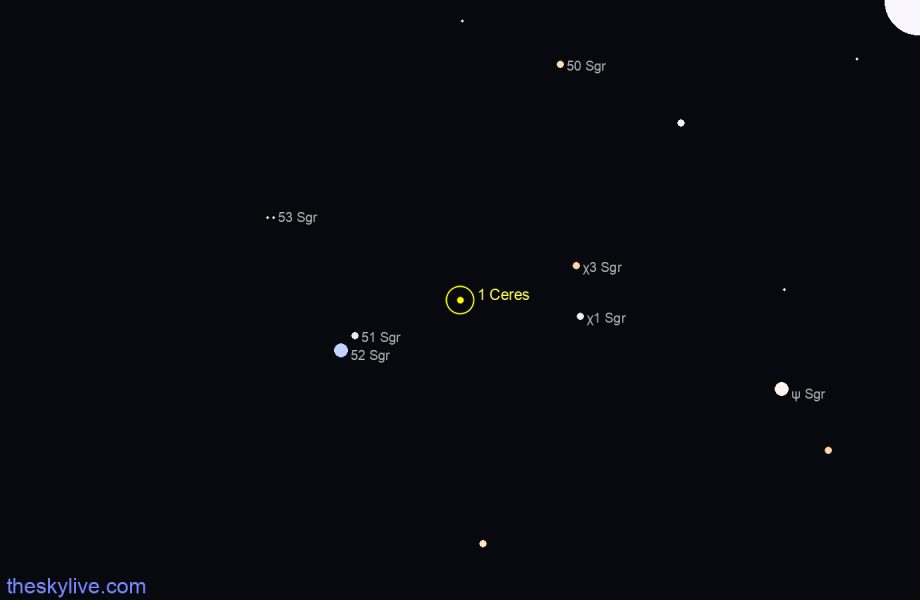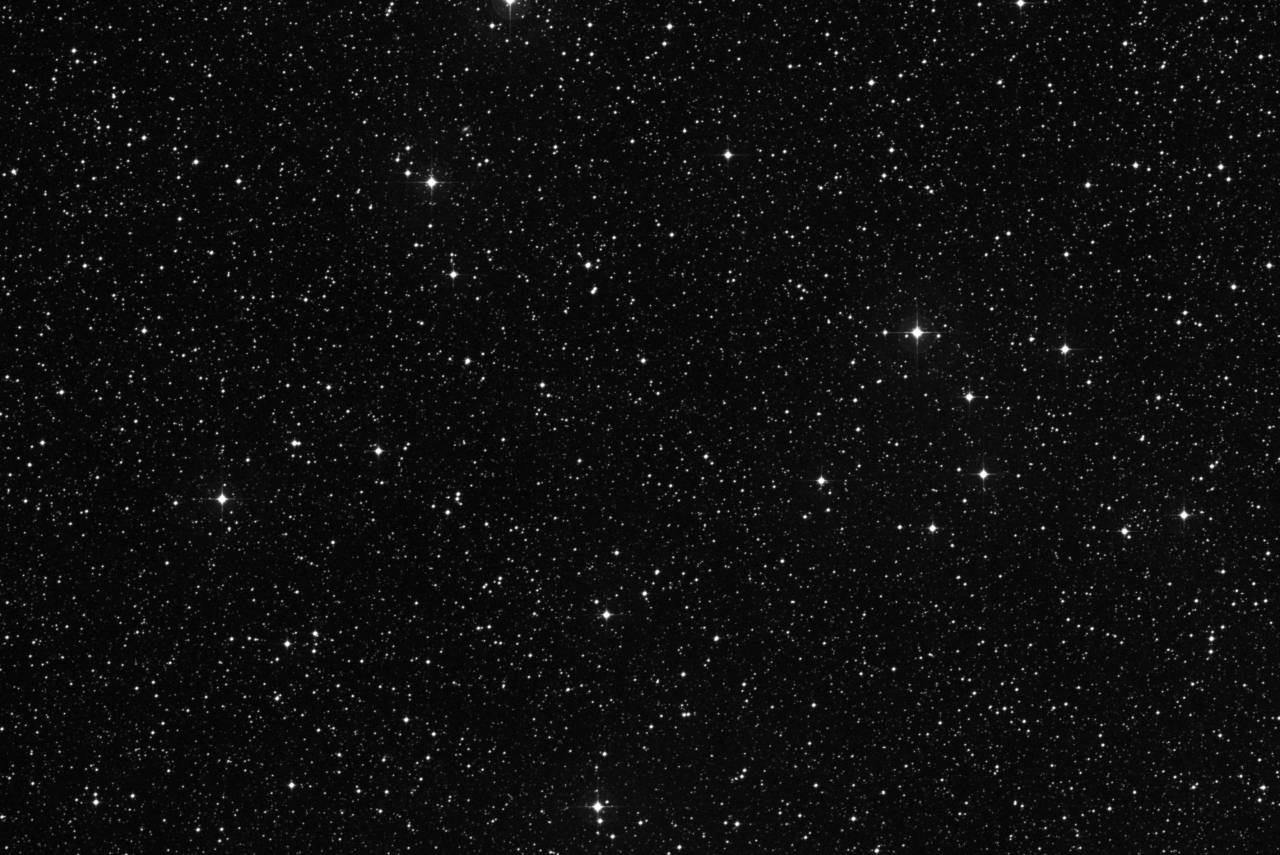Dwarf Planet 1 Ceres
Ceres is the largest object in the asteroid belt, located between the orbits of Mars and Jupiter. It was discovered by Italian astronomer Giuseppe Piazzi on 1 January 1801 and was later reclassified as a dwarf planet in 2006, along with Pluto and Eris. Ceres has a diameter of approximately 940 kilometers and a mass of 9.39 x 10^20 kilograms, making it about 1/14th the mass of the Moon. Ceres has a relatively round shape, and its surface is covered in craters, mountains, and bright spots, including the famous Occator Crater, which contains bright deposits of salt. It has no atmosphere, but it does have a thin water vapor exosphere. Ceres has a rotational period of about 9.1 hours and an orbital period of 4.6 Earth years. In 2015, NASA's Dawn spacecraft entered orbit around Ceres, becoming the first spacecraft to visit a dwarf planet and providing detailed images and data about its geology, composition, and history.
Dwarf Planet 1 Ceres is currently in the constellation of Sagittarius, at a distance of 373,881,075 kilometers from Earth.
View interactive star map
Today's rise, transit and set times of Dwarf Planet 1 Ceres from Greenwich, United Kingdom (all times relative to the local timezone Europe/London):
- 1 Ceres is below the horizon from Greenwich, United Kingdom .
- Given its current magnitude, 1 Ceres is visible with the help of a binocular with a 50mm aperture, easy with a small telescope.
- Go to interactive sky chart
If you need to access this information frequently for your observations, you can create a simple customized Quick Access page, so that you can easily bookmark it in your browser favorites or add a shortcut to your mobile phones' home screen.
Dwarf Planet 1 Ceres Position and Finder Charts
Field of view: 10x6 degrees
View fullscreen
Higher precision deep sky finder chart, 60 arcmin wide, showing where Dwarf Planet 1 Ceres is right now. Click on the image to see a more detailed fullscreen tracker view.
Also check out Where is Dwarf Planet 1 Ceres?, a page that provides all the information needed to find Dwarf Planet 1 Ceres in the sky and additional links to sky charts.
Dwarf Planet 1 Ceres Distance from Earth
The distance of Dwarf Planet 1 Ceres from Earth is currently 373,881,075 kilometers, equivalent to 2.499241 Astronomical Units. Light takes 20 minutes and 47.1330 seconds to travel from Dwarf Planet 1 Ceres and arrive to us.
The following chart shows the distance of Dwarf Planet 1 Ceres from Earth as a function of time. In the chart the distance data is measured in Astronomical Units and sampled with an interval of 1 day.
The value of the reported distance might be somewhat inaccurate around the times of closest approach for objects passing extremely close to Earth. The value of the distance of 1 Ceres from Earth is also available as a real time updated value in the Live Position and Data Tracker.
Closest Approach of Dwarf Planet 1 Ceres to Earth
Between 1 January 1600 and 30 December 2499, the closest approach of Dwarf Planet 1 Ceres to Earth happens on Mon Feb 11 1636 at a distance of 1.573972 Astronomical Units, or 235,462,867 kilometers:
NOTE: values for the closest approach are computed with a sampling interval of 1 day.
Dwarf Planet 1 Ceres Brightness and Light Curve
The following chart is the predicted light curve (visual magnitude as a function of time) of Dwarf Planet 1 Ceres, according to the most recent ephemerides data. Magnitude data is sampled with a 2 days interval and there might be inaccuracies for objects changing brightness very rapidly during the course of a few days. For comets there could be large discrepancies between the observed and predicted brightness because of their highly dynamic behaviour.
Dwarf Planet 1 Ceres Orbital Elements
The following table lists the orbital elements of Dwarf Planet 1 Ceres at epoch 24 February 2023 00:00 UTC (JD: 2460000.5). Source: JPL Small-Body Database
| Element | Symbol | Value |
|---|---|---|
| Orbit eccentricity | e | 0.07881745 |
| Orbit inclination | i | 10.58634327° |
| Perihelion distance | q | 2.54907953 AU 381,336,871 km |
| Aphelion distance | Q |
2.98528395 AU 446,592,124 km |
| Semi-major axis | a |
2.76718174 AU 413,964,497 km |
| Orbital period | period |
4.6033 years 1,681.3377 days |
| Date of perihelion transit | Tp | 2022-Dec-06 14:18:42 2,459,920.0963 JD |
| Next perihelion transit | 2027-Jul-14 22:24 2,461,601.4340 JD |
|
| Argument of perihelion | peri | 73.470461544247° |
| Longitude of the ascending node | node | 80.260148690589° |
| Mean anomaly | M | 17.215651496148° |
| Mean motion | n | 0.21411522°/day |
Visualization of Dwarf Planet 1 Ceres Orbit
This 3d orbit diagram is a feature of our 3D Solar System Simulator and shows the orbit of Dwarf Planet 1 Ceres with respect of the Sun and the orbits of the major planets. The position of Dwarf Planet 1 Ceres and the planets along their orbits in this diagram accurately represents the current configuration of the objects in the Solar System. This is an experimental feature and it requires a WebGL enabled browser. Please provide us feedback!
View Dwarf Planet 1 Ceres in the 3D Solar System Simulator
Dwarf Planet 1 Ceres Physical Data
The following shows the known values of the most important physical parameters of Dwarf Planet 1 Ceres. Source: JPL Small-Body Database
| Physical Parameter | Value | Relative to Earth |
|---|---|---|
| Diameter | 952.4 km | 0.0747 |
| Sideral Rotation | 9.0742 hours | 0.3791 |
| Absolute Magnitude | 3.34 | |
| Geometric Albedo | 0.09 |
Dwarf Planet 1 Ceres 15 Days Ephemeris
The following table lists the ephemerides of Dwarf Planet 1 Ceres computed for the past and next 7 days, with a 24 hours interval. Click on each row of the table to locate Dwarf Planet 1 Ceres in our Online Planetarium at the chosen date.
| Date | Right AscensionR.A. | DeclinationDec. | MagnitudeMag | Constellation |
|---|---|---|---|---|
| 2024 Apr 11 | 19h 18m 25s | -23° 39’ 34” | 8.73 | Sagittarius |
| 2024 Apr 12 | 19h 19m 14s | -23° 40’ 59” | 8.72 | Sagittarius |
| 2024 Apr 13 | 19h 20m 00s | -23° 42’ 28” | 8.71 | Sagittarius |
| 2024 Apr 14 | 19h 20m 48s | -23° 43’ 58” | 8.70 | Sagittarius |
| 2024 Apr 15 | 19h 21m 33s | -23° 45’ 32” | 8.69 | Sagittarius |
| 2024 Apr 16 | 19h 22m 15s | -23° 47’ 08” | 8.67 | Sagittarius |
| 2024 Apr 17 | 19h 22m 59s | -23° 48’ 50” | 8.66 | Sagittarius |
| 2024 Apr 18 | 19h 23m 40s | -23° 50’ 34” | 8.65 | Sagittarius |
| 2024 Apr 19 | 19h 24m 20s | -23° 52’ 20” | 8.64 | Sagittarius |
| 2024 Apr 20 | 19h 25m 00s | -23° 54’ 11” | 8.63 | Sagittarius |
| 2024 Apr 21 | 19h 25m 37s | -23° 56’ 07” | 8.61 | Sagittarius |
| 2024 Apr 22 | 19h 26m 13s | -23° 58’ 05” | 8.60 | Sagittarius |
| 2024 Apr 23 | 19h 26m 49s | -24° 00’ 07” | 8.59 | Sagittarius |
| 2024 Apr 24 | 19h 27m 24s | -24° 02’ 13” | 8.58 | Sagittarius |





